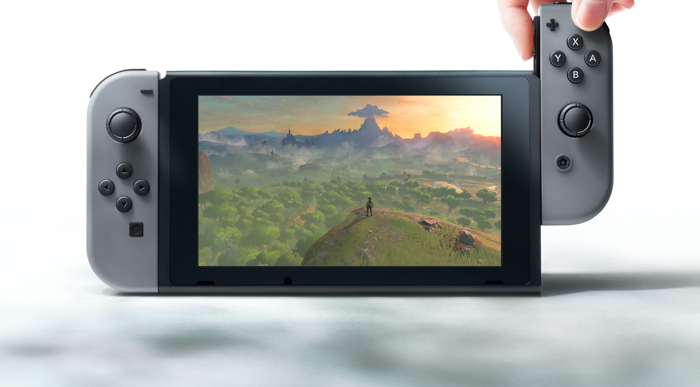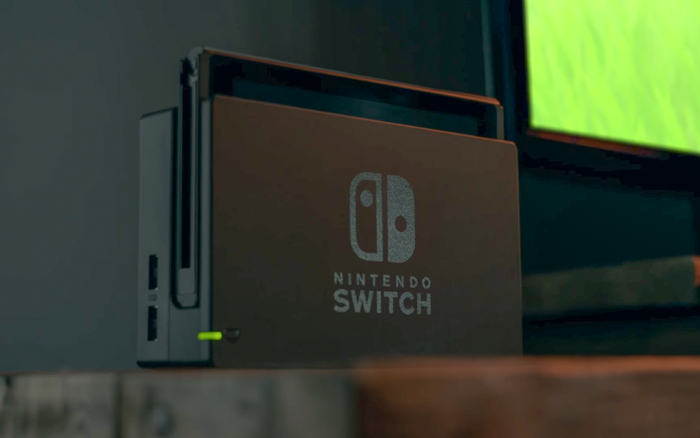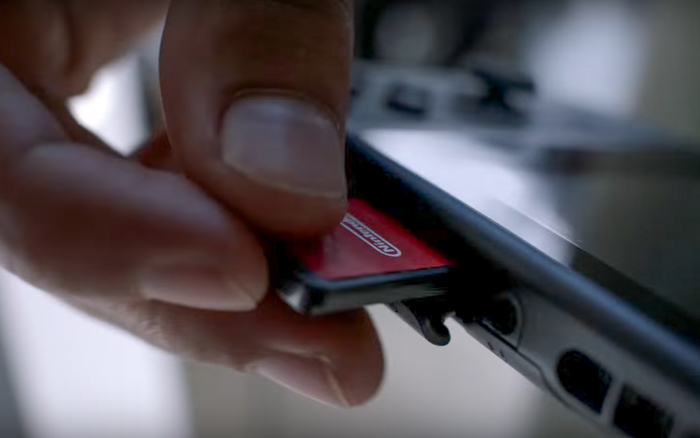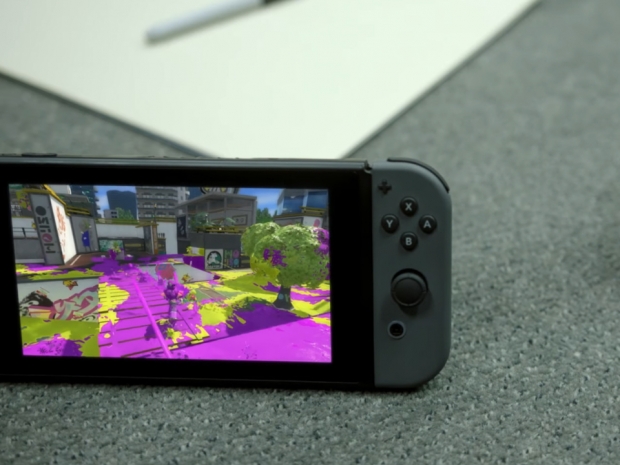The company also floated the idea that the new device would be considered both a portable and home-use platform, complete with detachable controls that could be used on the go and at home with a TV set.
Today, Nintendo has announced the console as the Switch, merging both aspects of handheld and at-home platform gaming into a single device featuring detachable controllers on either side of the device. This will be the first time in 27 years that the company has merged development teams from both handheld and home console units, making it easier for them to produce titles at a lower development cost while reaching both mobile and at-home audiences.

Image credit: Nintendo
For on-the-go use, the device detaches as a tablet that appears similar to both a Wii U controller and Nvidia’s Shield tablet. It can also be used at home with a TV by mounting inside of a docking station that might feature its own processing unit as well, along with an HDMI port and USB ports.

Nintendo Switch docking station (via Nintendo)
The controllers are called Joy-Con controllers and feature a traditional D-pad, dual joysticks and the usual option buttons, while the device's display is multi-touch capable as well. Additionally, there will be an at-home gameplay controller for TV use called the Nintendo Switch Pro controller, or alternatively a Joy-Con Grip accessory for using the portable controllers instead.

Image credit: Nintendo
Back to catridges
The company’s new Switch console will also go back to using cartridges, but not the larger ones from the days of NES, SNES and Nintendo 64. Instead, they will be sized similarly to the Nintendo DS and 3DS.

Image credit: Nintendo
Nvidia Tegra on-board
There were some hints back in July that Nintendo would be contracting Nvidia as the GPU provider for the NX, as sources pointed out that developer units have been using the company’s Tegra X1 chips found in the Google’s Pixel C tablet and Nvidia’s own Shield Android TV device.
The verdict seems to be that Nintendo has chosen a low-power mobile SoC in order to give the device the portability of a DS or other handheld console, while not competing directly with more home-centric devices like Sony’s PS4 or Microsoft’s Xbox One.
Nvidia says in its own blog post that development of the device “encompassed 500 man-years of effort” from everything including the algorithms, architecture, system design, software, APIs, game engines and accessories. More specifically, the company developed a new API called NVN in order to encompass the lightweight form factor without sacrificing some higher-level rendering features available on desktop and notebook GPUs.
Available in March
As we reported earlier today, the console will be arriving in March and should be launching worldwide, perhaps with a few days in between certain countries. The previous Wii U console launched in the US and Canada on November 18th, followed by November 29th in South Africa, November 30th in the EU and Australia, and December 8th in Japan, while Brazil received it in the following November. The company is expected to announce pricing for the Switch at a later date, at which point the release schedule by country will also be made available.

